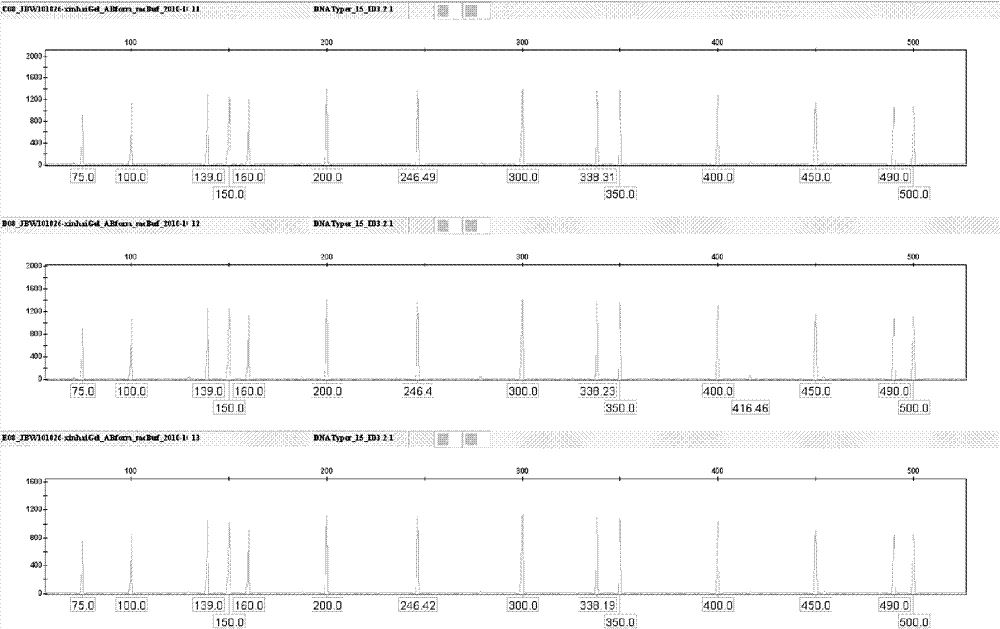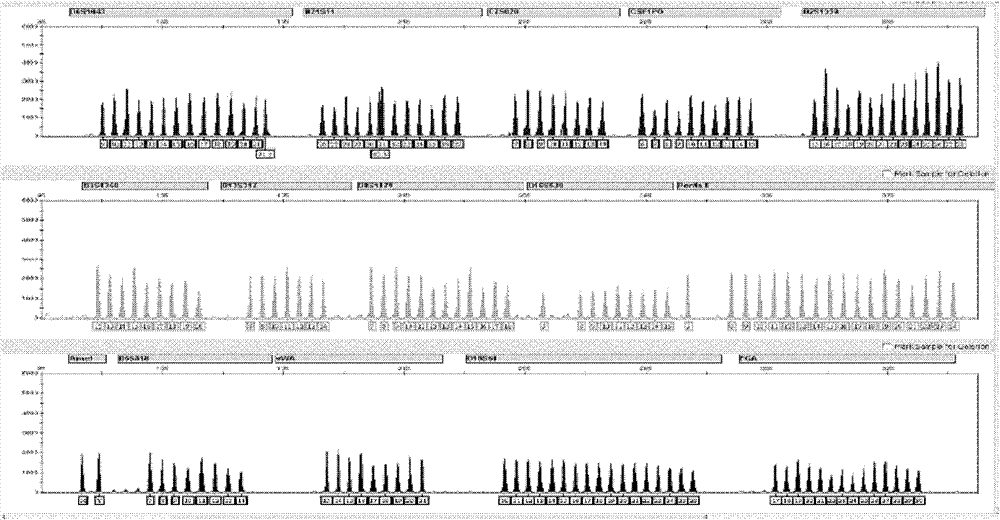Blended copolymer gel with capillary self-coating effect and preparation method thereof
A copolymer and capillary technology, which is applied in the field of blended copolymer gel and its preparation, can solve the problems that the uniform distribution of the two polymers cannot be guaranteed, the coating ability of the random copolymer is different, and the product quality is difficult to guarantee.
- Summary
- Abstract
- Description
- Claims
- Application Information
AI Technical Summary
Problems solved by technology
Method used
Image
Examples
Embodiment 1
[0026] Embodiment 1, the preparation of self-coating polymer (polyN, N-dimethylacrylamide)
[0027] Add 5g of N,N-dimethylacrylamide monomer, 13mL of methanol, 37mL of deionized water, 5mg of ammonium persulfate (APS) and a stirring bar into a 250mL round bottom flask, and pass helium for 1 hour to remove the oxygen in the system . Then 5 μL of N,N,N',N'-tetramethyldiethylamine (TEMED) was added via a syringe, and reacted at room temperature for 18 hours. After the reaction, 20 mL of water was added, and then the polymer was precipitated with ice acetone, then dissolved in water, dialyzed for a week (with a dialysis membrane with a molecular weight cut-off of 7000), and then freeze-dried to obtain a white solid. The viscosity-average molecular weight of polymer measured by Ubbelohde viscometer is 300,000.
Embodiment 2
[0028] Example 2, Preparation of a sieve polymer (poly N, N-dimethylacrylamide-acrylamide random copolymer) polymerized with self-coating polymer monomers
[0029] Add 1g of N,N-dimethylacrylamide monomer, 10g of acrylamide monomer, 80mL of deionized water, 10mg of ammonium persulfate (APS) and a stirring bar into a 250mL round bottom flask, and pass helium for 1 hour to remove the system Oxygen in. Then 10 μL of N,N,N',N'-tetramethyldiethylamine (TEMED) was added via a syringe, and reacted at room temperature (25°C) for 24 hours. After the reaction, the polymer was precipitated with acetone, dissolved in water, dialyzed for a week (with a dialysis membrane with a molecular weight cut-off of 7000), and then freeze-dried to obtain a white solid. The viscosity-average molecular weight of the polymer measured with an Ubbelohde viscometer is 1.4 million (the test conditions are tested according to the method for polyacrylamide, and the national standard GB 12005.1 is used for the...
Embodiment 3
[0030] Embodiment 3, the preparation of blend copolymer gel
[0031] 1. Obtaining the sol buffer
[0032] 1. Measure 5ml of sterile water in a clean 20ml glass bottle.
[0033] 2. Weigh 3.8g of urea (ultra-pure grade). Add urea to a bottle containing water. Cap and shake gently by hand until all the urea is dissolved.
[0034]3. Add 1ml of 10-fold Running Buffer (A.C.E Buffer product number K761 purchased from Amresco, USA), and shake gently to obtain 10ml of sol buffer.
[0035] 2. Copolymer blend gel (sol buffer: poly N, N-dimethylacrylamide: poly N, N-dimethylacrylamide-acrylamide random copolymer = 500ml: 1g: 10g)
[0036] 4. Weigh 0.02g of the poly-N,N-dimethylacrylamide of Example 1 and add it to the bottle,
[0037] 5. Weigh 0.2g poly N,N-dimethylacrylamide-acrylamide random copolymer again, and add it to the bottle,
[0038] 6. Gently shake the bottle and mix all the ingredients, then centrifuge at 1000rpm for 15min, all the contents will be at the bottom of the ...
PUM
| Property | Measurement | Unit |
|---|---|---|
| length | aaaaa | aaaaa |
Abstract
Description
Claims
Application Information
 Login to View More
Login to View More - R&D
- Intellectual Property
- Life Sciences
- Materials
- Tech Scout
- Unparalleled Data Quality
- Higher Quality Content
- 60% Fewer Hallucinations
Browse by: Latest US Patents, China's latest patents, Technical Efficacy Thesaurus, Application Domain, Technology Topic, Popular Technical Reports.
© 2025 PatSnap. All rights reserved.Legal|Privacy policy|Modern Slavery Act Transparency Statement|Sitemap|About US| Contact US: help@patsnap.com


